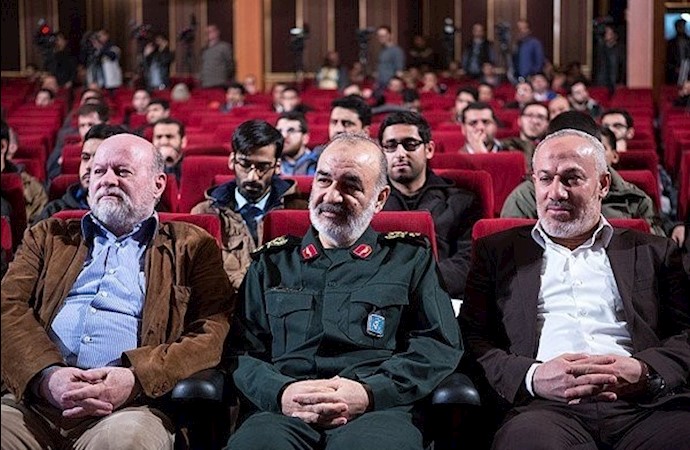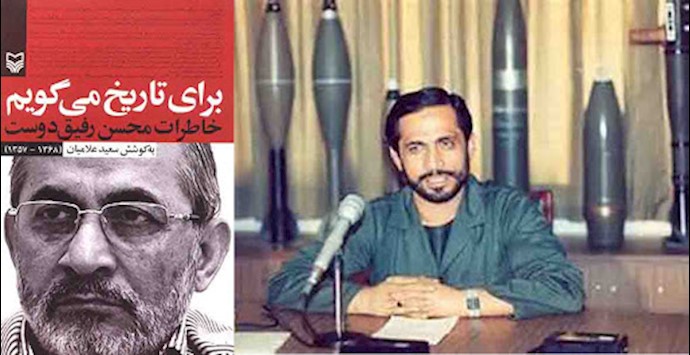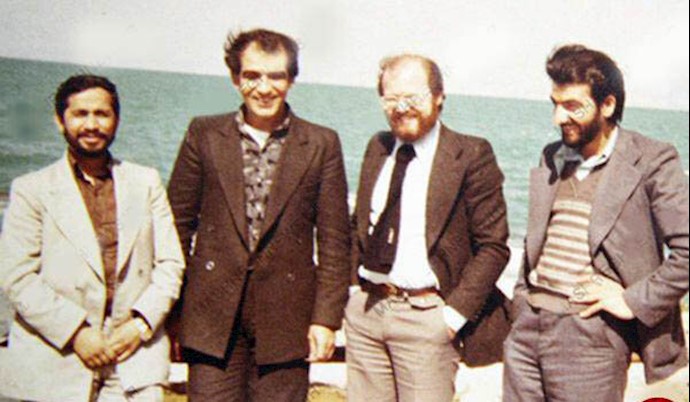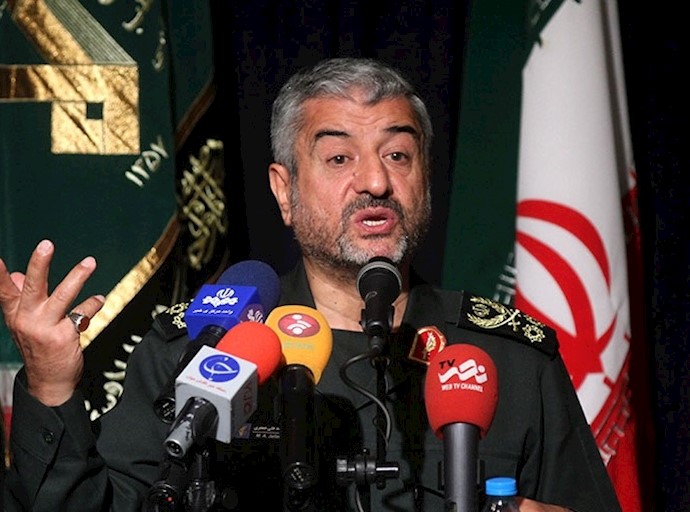Analysis by PMOI/MEK
Iran, February 3, 2020—In January 2020, the former IRGC commander and head of Yaghin think-tank Hassan Abbasi exposed how the IRGC derives benefit from hostage-taking. “So, look at how the IRGC generates funds. The IRGC detains a spy like Jason Rezaian. The U.S. pleads for him to be released. We say: No, you have to pay for him. Our government gets paid $1.7 billion to hand over this spy. Thus, by detaining just one spy, the IRGC earns the equivalents of the $1-2 billion it was supposed to receive from the government budget.”
Video of Hassan Abbasi’s speech reveals more about the IRGC’s strategy of hostage-taking.
Hassan Abbasi was responsible for the expansion of the combative capacity of IRGC NAVY and was a member of the central council of IRGC Ammar Base. He is also known as being one of the political strategists of the regime.
This theory is not limited to Abbasi. “Another issue is that Americans must understand that they cannot conduct any military operations against Iran… If Americans plan to attack Iran, be sure that we will capture 1,000 Americans in the first week, and they must pay some billion dollars for each. This may solve many of our economic problems, but I suggest that they don’t think about this plan,” former IRGC Chief Mohsen Rezaei told the Iranian regime’s state-run TV on July 13, 2015.

Mohsen Rezaei, former IRGC Chief
Narrating his memories on February 11, 2017, the well-known Iran-tied Lebanese terrorist Anis al-Naqqash told the Iranian regime’s TV (Ofoq Channel-Jahanara program) getting ransom by the Iranian regime, “I was in prison in France. There where operations in Lebanon. Four French hostages were taken in Lebanon … One day, someone came to me from the French Foreign Ministry … I asked, what do you want? He/she said we don’t know whether our hostages are alive or not … I told him/her yes, but on some conditions … The first condition is that one million dollars must return to Iran. He/she said OK, and what is the next demand? I told him/her expel Massoud Rajavi [the Iranian opposition leader] from France.”
“You cannot negotiate if you have no hostage. You cannot negotiate with an empty hand,” he added. Anis al-Naqqash was charged for being involved in the assassination attempt the last Prime Minister of Iran under Pahlavi monarchy, Shapour Bakhtiar, and was sentenced to life in prison in a Paris court. The Iran-backed assassination attempt resulted in the death of a police officer and a civilian. Al-Naqqash was released in July 1990 and handed over to the Iranian regime.

Anis al-Naqqash (left) next to the IRGC Chief Hossein Salami
“Revealed: hand of Iran behind Britons' Baghdad kidnapping,” the Guardian reported on December 30, 2009. The report revealed some details about the Iranian regime’s role in kidnapping five British men in Iraq. “The five British men kidnapped in Iraq were taken in an operation led and masterminded by Iran's Revolutionary Guard… The men – including Peter Moore, who was released today after more than two years in captivity – were taken to Iran within a day of their kidnap from a government ministry building in Baghdad in 2007, several senior sources in Iraq and Iran have told the Guardian.
“They were incarcerated in prisons run by the al-Quds force, a unit that specializes in foreign operations on behalf of the Iranian government. One of the kidnappers has told this paper that three of the Britons – Jason Creswell, Jason Swindlehurst and Alec Maclachlan – were subsequently killed after the British government refused to take ransom demands seriously.
“Last night it emerged that part of the deal that led to the release of Moore involved the handing over of a young Shia cleric, Qais al-Khazali, a leading figure in the Righteous League, which emerged in 2006 and stayed largely in the shadows as a proxy of the Iranian Revolutionary Guard's elite unit, the al-Quds forces. Khazali was last night handed over by the US military for release by the Iraqi government.
“A former Iranian Revolutionary Guard member, speaking to this paper under the condition of anonymity, said the extraordinary kidnap was masterminded by Iran. The man, a former major who worked for 14 years inside the Iranian organization and claims to have taken part in kidnap operations himself, believes the hostages were held in two al-Quds camps in Iran – one known as Qasser Shiereen military camp, close to the Iraqi border crossing with Mehran, and a second camp was known as the Tehran Pars, located near a salt lake north-east of Qom,” the Guardian reported.
Hostage-taking is one of the IRGC’s main duties for executing the regime’s policy of exporting terrorism since day one.
“I narrate for the history” is the name of a book written by Saeed Allamian and published as a memoir of Mohsen Rafighdoost. The book is including the writer’s interviews with Mohsen Rafighdoost. Mohsen Rafighdoost, who was an IRGC founder and had some high-profile positions in his background, explains an example of IRGC’s ransom and hostage-taking. “I went to Ayatollah Mohammadi Gilani and told him that we have a group and we want to dispatch them to execute Bakhtiar. Do you allow us? He said: Yes! I issue the fatwa; and wrote: Bakhtiar’s bloodshed is justified,” Rafighdoost explains in the book. (Page 129)

Mohsen Rafighdoost, a founder of IRGC
“After the issue of the fatwa, a group of five including Anis al-Naqqash (also known as Abu Mazen who is now … residing in Iran)… and in short, three Iranians and two Lebanese went to France to execute the fatwa. At the same time, Abu Sharif (one of the founders of IRGC) had dispatched another group for the same operation… the operation failed due to the interference of these two groups: ‘Abu Sharif and I were not aware that we were working on the same plan. The executioners were working under the cover of reporters of a famous Arabic magazine… Abu Mazen and Nejad Tabriziz (executioner element) clashed with the police when they went with a machine gun… and our plan failed.’” (Page 130)
“A noisy trial was held for the group of five, and they confessed that they were tasked by Mohsen Rafighdoost… In 1990, Lebanese guerrillas who were Abu Mazen’s friends attacked the French embassy in Lebanon and hijacked a French plane. A representative of the French President met with Rafighdoost afterward… Rafighdoost declared that the only solution is the release of Abu Mazen’s group, and their friends will conduct further actions if they were not released.” (Page 130)
“Rafighdoost … goes to France … and Abu Mazen and his team were released within two weeks.” (Page 131)

Mohsen Rafighdoost (left) with Anis al-Naqqash (second from right) and Mohsen Rezaei (Right)
The story of IRGC’s terror, hostage-taking, and plane hijacking ended after ten years with a deal behind the curtains of appeasement policy.
Former IRGC Chief Mohammad Ali Jafari explained the benefits of hostage-taking of the U.S. embassy in Tehran for the regime in November 2018. “Indeed, if there was not the American embassy hostage-taking, our revolution could not live for over 40 years and the revolution would be annihilated in the first decade… There were just a few numbers of our revolutionary authorities that agreed on this revolutionary act, including Khamenei,” he said. (IRIB news agency)

Mohammad Ali Jafari, former IRGC Chief
The remarks of the then-IRGC Chief clearly show that the Iranian regime finds its way out from the crises in the strategy of hostage-taking and export of terrorism and plans such measures at the top levels of the regime hierarchy.
On the other hand, new approaches of the West toward the regime has proved that the only solution against the regime’s bullying in the world is firmness. “Experience has proven that the clerical regime cannot be reformed and understands only the language of power and firmness,” the president-elect of National Council of Resistance of Iran (NCRI) Maryam Rajavi stated.
The solution is what Maryam Rajavi showed the world: “The international community, especially the European Union, must end the policy of appeasement and recognize the right of the Iranian people to resist and rise for freedom to replace popular sovereignty in place of the mullahs’ rule,” Maryam Rajavi stated on January 3, 2020.





